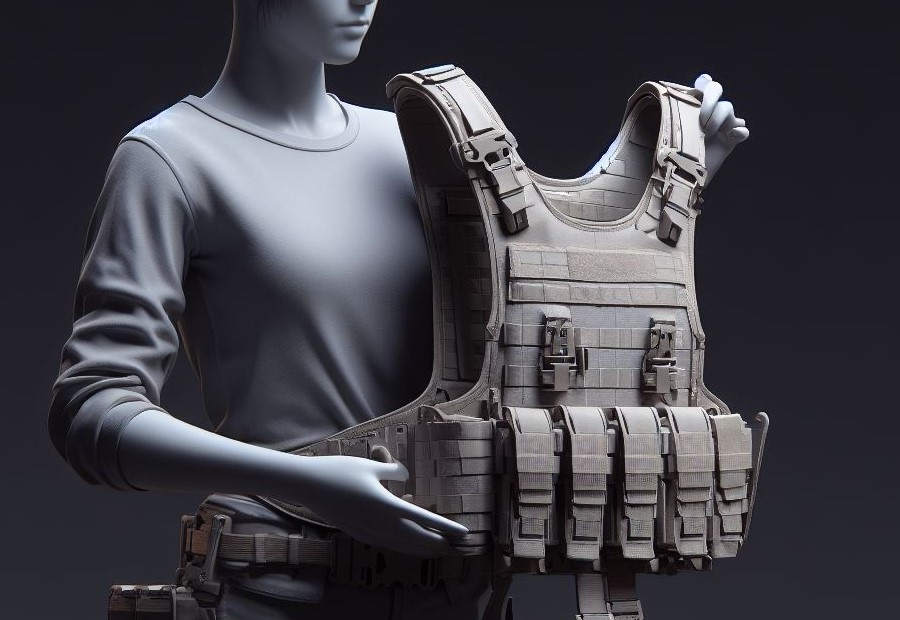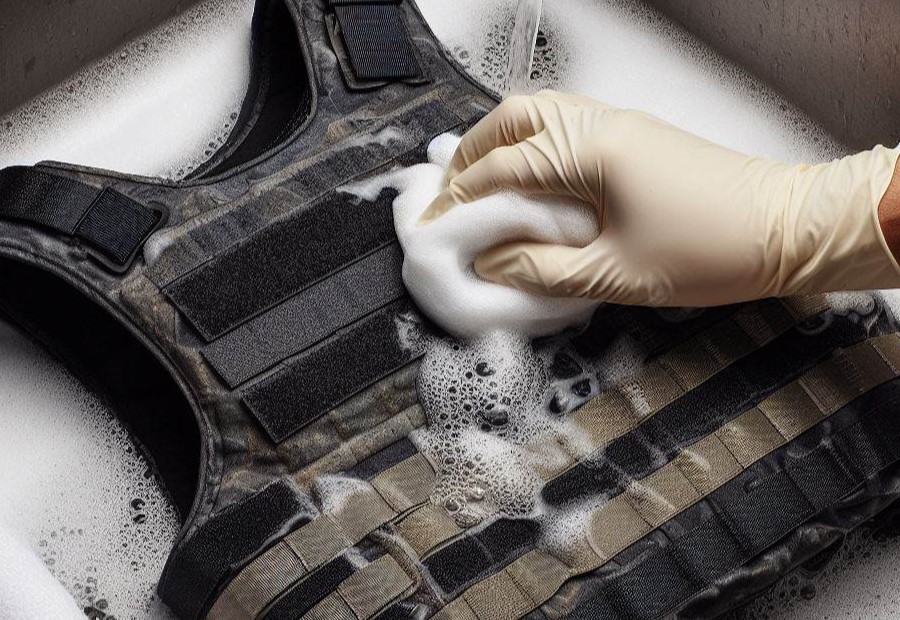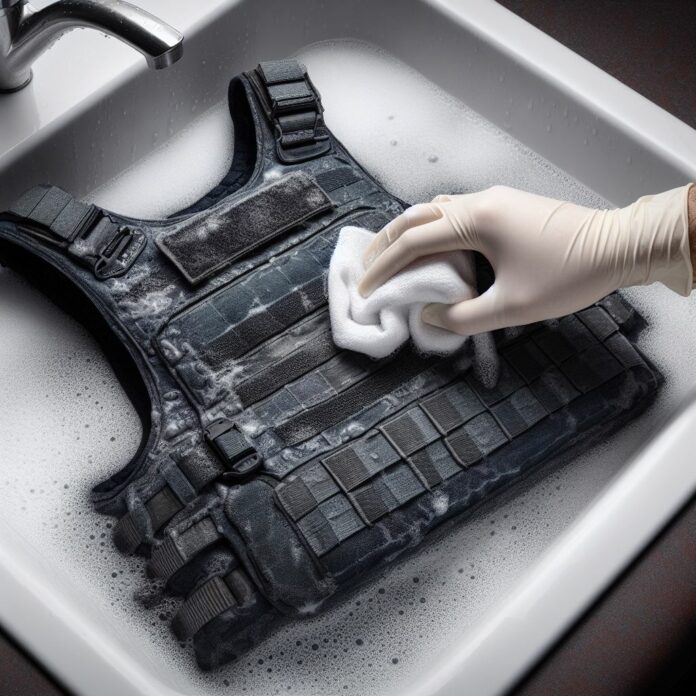Bulletproof vests are essential protective gear worn by law enforcement officers, military personnel, and individuals in high-risk professions. Proper maintenance of these vests is crucial to ensure their optimal performance and longevity.
In this article, we will explore the importance of maintaining a bulletproof vest and provide practical guidelines for its maintenance.
We will also discuss the various components of a bulletproof vest, general maintenance tips, specific maintenance tips based on the vest’s material and type, how to check for signs of wear and tear, and when it may be necessary to replace or upgrade the vest.
By following these maintenance guidelines, you can ensure that your bulletproof vest remains in excellent condition, providing you with the necessary protection when you need it most.
Why is Maintenance Important for Bulletproof Vests?

Maintenance is crucial for bulletproof vests. Regular care and upkeep ensure their effectiveness and prolong their lifespan. Failing to maintain a bulletproof vest can compromise its ability to protect against ballistic threats.
Dust, dirt, and sweat can accumulate on the surface, negatively impacting its performance. Cleaning the vest with recommended methods helps remove contaminants and maintain its integrity. Inspecting the vest regularly is essential to identify any signs of wear or damage.
Repairing or replacing damaged components promptly is vital to ensure optimal protection. Additionally, it is important to store the vest properly when not in use, away from extreme temperatures and direct sunlight.
By following these maintenance practices, the vest will remain in peak condition, providing the highest level of safety and reliability.
Understanding the Components of a Bulletproof Vest

Unlocking the secrets of a bulletproof vest lies in Understanding the Components that make it up. In this thrilling section, we dive into the world of bulletproof vests, exploring the Outer Carrier, the life-saving Ballistic Panels, and the secure Straps and Fastenings that hold it all together.
Outer Carrier
The outer carrier plays a vital role in a bulletproof vest by providing essential protection and securely holding the ballistic panels in place.
- Material: Outer carriers are typically crafted from durable and adjustable materials, such as nylon or polyester, ensuring long-lasting strength and adaptability.
- Design: They are meticulously designed to fit snugly over the ballistic panels and incorporate multiple adjustable straps or fastenings, ensuring a secure and comfortable fit.
- Functionality: The outer carrier serves as a protective cover for the vest, safeguarding the ballistic panels from wear and tear, as well as providing an additional layer of defense against various environmental elements.
- Identification: Many outer carriers feature convenient pockets or Velcro panels that allow for easy attachment of identification tags or patches.
Pro-Tip: When selecting an outer carrier, it is crucial to choose one that is compatible with your specific bulletproof vest model to ensure proper fit and optimal functionality. Additionally, consider a design that offers effortless access to any equipment or accessories you may need to carry while wearing the vest.
Ballistic Panels
When it comes to bulletproof vests, ballistic panels play a vital role in providing protection against ballistic threats. Here are some key considerations:
- Material: Typically made from strong and durable materials like Kevlar, Dyneema, or a combination of both, ballistic panels ensure reliability.
- Layers: These panels consist of multiple layers of ballistic material, strategically designed to absorb and disperse the impact energy caused by bullets.
- Thickness: The level of protection required determines the thickness of ballistic panels, with thicker panels offering heightened levels of defense.
- Rating: Based on their ability to withstand specific ballistic threats, ballistic panels receive different levels of protection. These ratings follow standardized testing procedures.
- Covering: Typically enclosed within an outer carrier, ballistic panels receive additional protection while remaining securely in place.
Pro-tip: To ensure you choose a bulletproof vest that meets your specific protection needs, carefully consider the material, layers, thickness, and rating of the ballistic panels.
Straps and Fastenings
When it comes to straps and fastenings, their role is crucial in ensuring a secure and comfortable fit for bulletproof vests. Here are some key points to consider:
- Adjustability: Both straps and fastenings should be adjustable to accommodate different body sizes and shapes, allowing for a customized fit.
- Durability: It is important to use high-quality materials for the straps and fastenings to withstand the wear and tear of regular use.
- Secure Closure: The fastenings should provide a secure closure to prevent the vest from shifting or coming undone during use.
- Comfort: To ensure comfort and prevent chafing or discomfort during extended wear, the straps should be padded or lined.
- Easy Removal: It should be easy to open or release the fastenings for quick removal of the vest if needed.
- Proper Adjustment: Regularly checking and adjusting the straps is important to maintain a proper fit over time.
- Regular Inspection: Inspect the straps and fastenings for any signs of wear, such as fraying or weakening, and replace them if necessary.
- Cleaning: Follow the manufacturer’s instructions to clean the straps and fastenings and ensure their longevity and functionality.
By considering these factors, you can ensure that the straps and fastenings of your bulletproof vest are in optimal condition, providing the necessary security and comfort for your safety.
General Maintenance Guidelines for Bulletproof Vests

Taking care of your bulletproof vest is crucial for its longevity and effectiveness. In this section, we’ll dive into essential maintenance guidelines that will ensure your vest remains in top condition.
From regular inspections to proper cleaning and storage, each sub-section will provide you with valuable tips and techniques to keep your bulletproof vest ready for any situation. So, let’s get started on maintaining your ultimate protection!
Regular Inspection
Regular inspection is a crucial aspect of maintaining a bulletproof vest. It ensures that the vest is in optimal condition and provides the necessary protection. To perform a regular inspection, follow these guidelines:
1. Begin by visually examining the outer carrier. Check for any signs of damage, such as rips, tears, or loose stitching. These issues can compromise the vest’s integrity.
2. Inspect the ballistic panels next. Look for any visible signs of wear and tear, such as indentations, deformations, or discoloration. These can indicate that the panels have been compromised and may no longer provide adequate protection.
3. Examine the straps and fastenings on the vest. Ensure that they are securely attached and in good working condition. Loose or damaged straps can impact the vest’s fit and effectiveness.
4. Pay attention to the overall condition of the vest, including any potential loss of protective qualities. If there are significant changes in its appearance or performance, it may be time to replace or upgrade the vest.
Regular inspection is essential to catch any issues before they worsen and compromise the vest’s effectiveness. By staying vigilant and conducting regular inspections, you can ensure that your bulletproof vest remains in optimal condition and provides the necessary protection when needed.
Remember, maintaining a bulletproof vest is crucial for personal safety and should be taken seriously. Regular inspections, along with following general maintenance guidelines, will help prolong the lifespan of the vest and keep you well-protected.
Suggestions: Schedule a monthly or quarterly inspection routine to ensure consistent maintenance of your bulletproof vest. Consider creating a checklist to make the inspection process more organized and comprehensive.
Additionally, keep records of any repairs or replacements made to the vest for future reference.
Cleaning and Washing
Keeping your bulletproof vest clean and well-maintained is crucial. Here are some steps to follow for proper cleaning:
- Firstly, inspect the vest to check for any visible dirt, stains, or debris.
- Next, according to the manufacturer’s instructions, remove any detachable components like ballistic panels or straps.
- Gently wipe the vest’s exterior using a damp cloth or sponge. Avoid using harsh chemicals or materials that may damage the fabric.
- In case your vest is machine-washable, place it in a mesh laundry bag and wash it on a gentle cycle using cold water and a mild detergent.
- For vests that cannot be machine-washed, soak them in a bathtub or large basin filled with cold water and a small amount of mild detergent. Gently agitate the water to remove dirt and stains.
- Rinse the vest thoroughly with cold water to ensure all detergent residue is removed.
- Hang the vest in a well-ventilated area to air dry. Avoid direct sunlight or high heat that may degrade the ballistic material.
- Once the vest is completely dry, reassemble any detachable components following the manufacturer’s instructions.
- Store the vest in a cool, dry place away from moisture and extreme temperatures to maintain its quality.
Storage and Handling
For the proper storage and handling of bulletproof vests, it is essential to follow these guidelines:
- Store in a cool, dry place: To maintain the effectiveness and longevity of bulletproof vests, they should be stored in a location that is not exposed to direct sunlight, excessive heat, or high humidity. These conditions can degrade the protective materials and compromise the vest’s ability to stop bullets.
- Avoid sharp objects: When storing or handling bulletproof vests, it is crucial to keep them away from sharp objects such as knives, tools, or any other objects that could potentially puncture or damage the ballistic panels. This precaution ensures that the vest remains intact and fully functional.
- Hang properly: To prevent any deformation or damage, it is recommended to hang bulletproof vests on a sturdy hanger. Hanging them properly helps maintain the vest’s shape and integrity, ensuring that it is always prepared for use.
- Keep away from chemicals: Harsh chemicals, solvents, or corrosive substances should be avoided when it comes to bulletproof vests. These substances can deteriorate the materials and weaken the vest’s protection. It is important to clean the vest using approved cleaning methods and products to ensure its longevity.
- Handle with care: When handling bulletproof vests, it is crucial to treat them with care and avoid putting unnecessary stress on the materials. Dragging or throwing the vest should be avoided at all costs. It is always advisable to follow the manufacturer’s instructions for proper handling techniques. This approach ensures that the vest remains in optimal condition.
Specific Maintenance Tips Based on Vest Material and Type

Discover specific maintenance tips for different bulletproof vest materials and types. From Kevlar vests to plate carriers with ceramic plates, and soft armor with Dyneema panels, we’ll delve into the essential care and upkeep for each.
Learn how to prolong the lifespan of your vest with expert advice and ensure it provides optimal protection when you need it most. No more guessing – we’ve got you covered with the maintenance know-how for your specific bulletproof vest.
Kevlar Vests
Kevlar vests are a common type of bulletproof vest that offer effective protection against ballistic threats. They are made using Kevlar fibers, which are five times stronger than steel. Kevlar vests are lightweight and flexible, providing both comfort and mobility to the wearer.
Maintaining Kevlar vests is crucial to ensure their continued effectiveness. Regular inspection is important to check for any signs of damage or wear. This includes examining the outer carrier, ballistic panels, and straps for any deformations or loose stitches.
Cleaning and washing Kevlar vests should be done according to the manufacturer’s guidelines. It is typically recommended to hand wash the vest using a mild detergent and air dry it to avoid damaging the Kevlar fibers.
Storage and handling are also essential aspects of maintaining Kevlar vests. They should be stored in a cool, dry place away from direct sunlight, chemicals, and excessive moisture. Proper handling involves avoiding dragging or harsh impact that could potentially damage the vest.
Remember, Kevlar vests have a lifespan and should be replaced when they reach their expiration date or if they have been subjected to any significant impact or wear that may compromise their protective qualities.
Plate Carriers with Ceramic Plates
When it comes to bulletproof vests, plate carriers with ceramic plates are a popular choice for enhanced protection. Here are some important points to consider:
- Effective level of protection: Plate carriers with ceramic plates offer a higher level of protection compared to other materials. The design of ceramic plates enables them to withstand high-velocity rifle rounds and deliver exceptional stopping power.
- Durability: Ceramic plates are highly durable, capable of enduring multiple impacts without compromising their protective qualities. This ensures that the vest remains effective even after repeated use.
- Lightweight design: Despite their high level of protection, plate carriers with ceramic plates remain relatively lightweight. This allows users to move freely and comfortably without compromising safety.
- Customizability: Plate carriers with ceramic plates are often modular, enabling users to add or remove plates based on their specific needs. This adaptability makes it easier to adjust the level of protection required for different situations.
- Longevity: Ceramic plates have a long lifespan, making them a cost-effective choice in the long run. These plates can withstand years of use without significant degradation, providing reliable protection over an extended period of time.
Consider these factors when selecting plate carriers with ceramic plates to ensure that the vest meets your safety requirements.
Soft Armor with Dyneema Panels
When it comes to maintaining soft armor with Dyneema panels, there are several important aspects to consider. Here is a table highlighting some key maintenance guidelines:
| Aspect | Maintenance |
| Regular inspection | Inspect the Soft Armor with Dyneema Panels for any signs of damage, such as tears or punctures. Pay close attention to the stitching and ensure it is intact. |
| Cleaning | Follow the manufacturer’s instructions for cleaning the Soft Armor with Dyneema Panels vest. Generally, it is recommended to gently hand wash the vest using a mild detergent. |
| Storage | Store the vest in a cool, dry place away from direct sunlight. Avoid placing heavy objects on top of the Soft Armor with Dyneema Panels vest. |
| Handling | Handle the Soft Armor with Dyneema Panels vest with care to prevent unnecessary wear or damage. Avoid pulling or stretching the panels excessively. |
To ensure the optimal performance and longevity of your Soft Armor with Dyneema Panels, it is crucial to adhere to these maintenance guidelines. By regularly inspecting, cleaning, storing, and handling the vest properly, you can ensure that it remains in top condition for your safety.
Remember, taking good care of your bulletproof vest is essential to ensure its effectiveness and reliability when you need it the most.
Checking for Signs of Wear and Tear

As you inspect your bulletproof vest, it’s crucial to keep an eye out for signs of wear and tear. These subtle indications can make a significant difference in the level of protection your vest provides.
Indentations or Deformations
| Signs of Indentations or Deformations | Possible Causes |
|---|---|
| Indentations on the surface of the vest | Extreme pressure or impact |
| Visible deformations or bulges | Damage from sharp objects or blunt force |
| Uneven or distorted shape | Misuse or improper storage |
If you notice any indentations or deformations on your bulletproof vest, it is important to assess the cause and take appropriate action. Indentations or deformations on the surface of the vest could indicate extreme pressure or impact, potentially compromising its protective capabilities.
Visible deformations or bulges may suggest damage from sharp objects or blunt force, which can weaken the vest’s effectiveness. An uneven or distorted shape might result from misuse or improper storage, reducing the vest’s overall performance.
Maintaining the structural integrity of your bulletproof vest is crucial for ensuring its reliable protection. Regularly inspecting the vest for signs of indentations or deformations allows you to address any issues promptly.
Taking immediate action, such as contacting the manufacturer or replacing the vest, can help maintain its effectiveness and keep you safe in high-risk situations.
Loose or Damaged Stitches
Regularly inspecting and addressing any issues with the stitches in a bulletproof vest is crucial for maintaining its effectiveness and protection. Loose or damaged stitches can significantly compromise the vest’s performance. Here are some important points to consider:
- Regular inspections: Conduct frequent visual inspections of the vest, paying close attention to the stitching. Look for any loose threads, frayed areas, or stitches that have come undone.
- Addressing loose stitches: If you notice any loose or damaged stitches, it is important to repair them immediately. Use a strong nylon thread and a needle to carefully restitch the affected area, ensuring the stitches are secure and tight.
- Replacing damaged sections: If the stitching damage is extensive or the area cannot be effectively repaired, it may be necessary to replace the damaged section of the vest. Consult with a professional or the manufacturer for guidance on proper replacement procedures.
- Preserving integrity: Maintaining the strength and integrity of the stitches is crucial for the overall performance of the vest. Loose or damaged stitches can create vulnerable areas where bullets or projectiles may penetrate.
Discoloration or Fading
Discoloration or fading in a bulletproof vest can indicate potential problems or compromised protective qualities. Here are some important points to consider:
- Any noticeable changes in color on the surface of the vest can be a sign of exposure to UV rays or other environmental factors. This can weaken the materials and compromise their integrity.
- If the original vibrant color of the vest starts to fade, it can indicate prolonged use or exposure to sunlight. Fading may also suggest the breakdown of the materials used in the vest, reducing its protective capabilities.
- Prolonged exposure to sunlight can accelerate the deterioration of the materials in a bulletproof vest, leading to discoloration and fading. Storing the vest away from direct sunlight when not in use can help minimize these effects.
- Contact with chemicals, including certain cleaning agents or contaminants, can cause discoloration or fading in a bulletproof vest. It is crucial to follow manufacturer recommendations for cleaning and avoid using harsh chemicals that may damage the vest.
- Discoloration or fading on a bulletproof vest does not necessarily mean it is no longer effective. However, it may indicate potential weaknesses or compromised material integrity. Regular inspections, as outlined in the maintenance guidelines, are important to ensure the vest’s ongoing protective qualities.
Loss of Protective Qualities
Loss of protective qualities is a significant concern when it comes to maintaining bulletproof vests. Bulletproof vests are designed to provide protection against various types of threats, and any loss in their protective capabilities can be detrimental.
Regular inspection is crucial in identifying any signs of loss of protective qualities. Indentations or deformations on the ballistic panels can indicate damage that may compromise their effectiveness.
Loose or damaged stitches should be addressed promptly to prevent further deterioration. Discoloration or fading may suggest exposure to elements that could weaken the materials.
It is important to understand that the loss of protective qualities can occur over time, due to wear and tear or aging of the materials. This can be accelerated if the vest is not properly cleaned and washed.
Proper cleaning procedures help maintain the integrity of the materials, ensuring they continue to offer the intended level of protection.
In some cases, loss of protective qualities may be unavoidable due to the specific material or type of vest. For example, Kevlar vests may degrade over time and may need to be replaced periodically. Plate carriers with ceramic plates may lose effectiveness if the plates become cracked or damaged.
To ensure the continued effectiveness of bulletproof vests, it is essential to regularly inspect for signs of wear and tear and address any issues promptly. This will help maintain the protective qualities of the vest and ensure its reliability when it is needed most.
Replacing and Upgrading Bulletproof Vests
When it comes to replacing and upgrading bulletproof vests, there are several important factors to consider:
- Quality: Ensure that replacing and upgrading bulletproof vests meets the same or higher standards as the previous one, providing optimal protection against ballistic threats.
- Material: Consider upgrading to vests made with advanced materials like Kevlar or Dyneema, which offer enhanced durability and flexibility.
- Fit: It is crucial to have a properly fitting vest to ensure maximum protection. Always take accurate measurements and consult sizing charts provided by manufacturers.
- Level of protection: Assess the threat level you are likely to face and choose a vest with the appropriate ballistic rating. NIJ levels, such as IIA, II, IIIA, III, and IV, indicate the vest’s ability to stop different caliber bullets.
- Expiration date: Replacing and upgrading bulletproof vests have a limited lifespan due to wear and tear or degradation of ballistic materials. Replace your vest before it reaches its expiration date to maintain optimal protection.
Frequently Asked Questions
1. How should I clean and care for my bulletproof vest?
To clean your bulletproof vest, spot clean it using a damp cloth and mild laundry detergent or Dawn dish soap. Avoid submerging it in water or using bleach, and do not machine wash or dry the vest. After spot cleaning, hang the vest to dry before reinserting the ballistic panels.
Read and follow the manufacturer’s care instructions carefully to avoid damaging the vest or voiding the warranty.
2. Can I use Arrest My Vest Spray to eliminate odors from my bulletproof vest?
Yes, Arrest My Vest Spray is a high-quality odor eliminating spray specifically made for bulletproof vests and tactical gear. It uses odor absorbing molecules to break down and eliminate odors instantly. You can use it to freshen up your vest and keep it smelling clean.
3. Should I wear a moisture-wicking shirt under my bulletproof vest?
Wearing a moisture-wicking shirt underneath your bulletproof vest is recommended. It can create a barrier between your skin and the vest, absorb sweat, and minimize the risk of chafing.
Under Armour offers moisture-wicking shirts popular among officers and law enforcement personnel.
4. How should I store my bulletproof vest?
When storing your bulletproof vest, keep it flat at room temperature in a dry, shaded place. Avoid storing it in a low airflow environment or where it may be exposed to extreme temperatures or direct sunlight.
Do not hang the vest by the carrier straps, as it may cause damage. Storing it indoors at room temperature is recommended to avoid voiding any warranty.
5. How often should I inspect my bulletproof vest for damage?
Regular inspection of your bulletproof vest is important to ensure its effectiveness. Visually inspect ballistic panel covers frequently for any damage or wear. Check for holes, tears, frayed fabric, or stitching separation.
If you notice a compromised outer waterproof membrane or an illegible label, contact your agency representative or the manufacturer for professional repair or replacement.
6. Can I clean my bulletproof vest using a washing machine?
No, soft ballistic armor is not machine washable. Avoid submerging it tightly woven fabric which can damage the vest and void the warranty. Washing the carrier vest separately on a gentle/delicate setting is acceptable, but remove any ballistic panels, trauma plates, and straps before cleaning.

